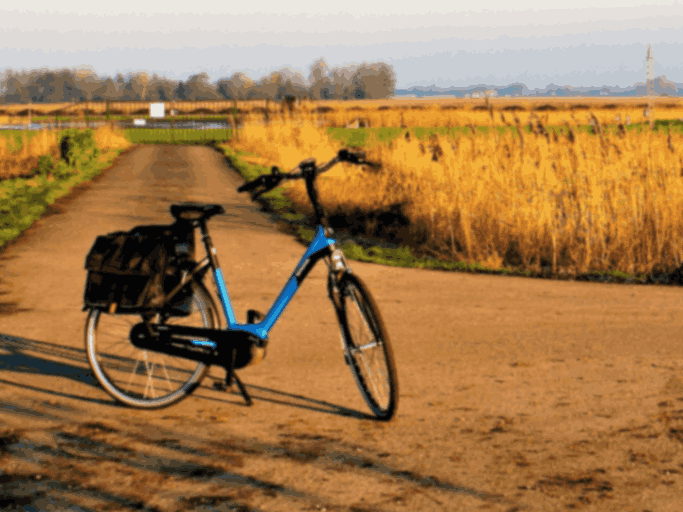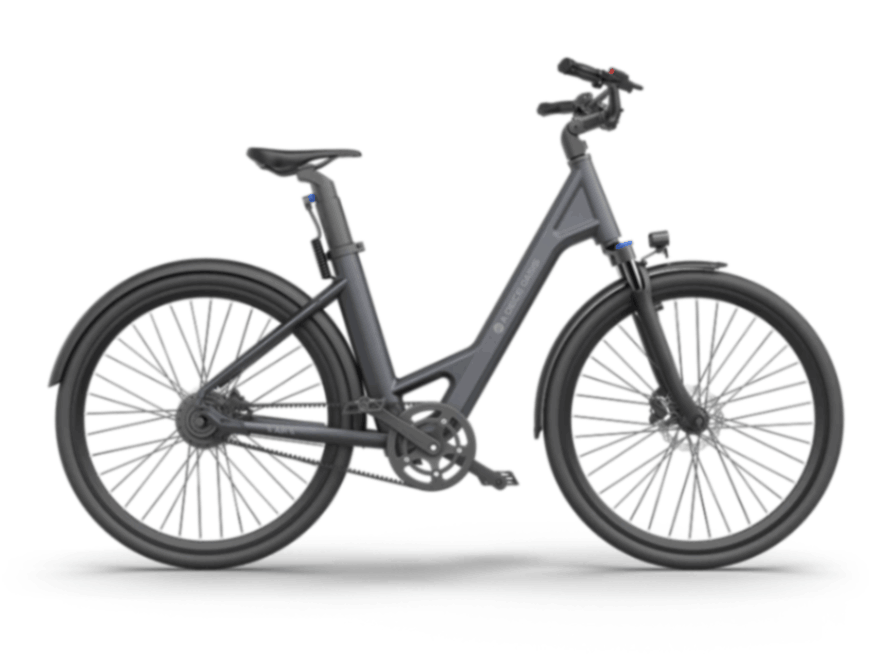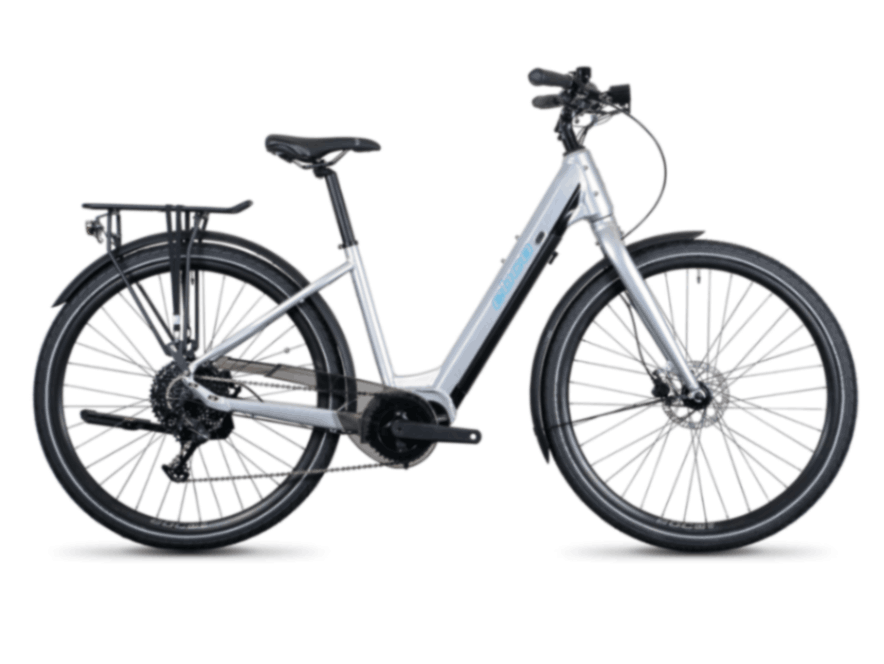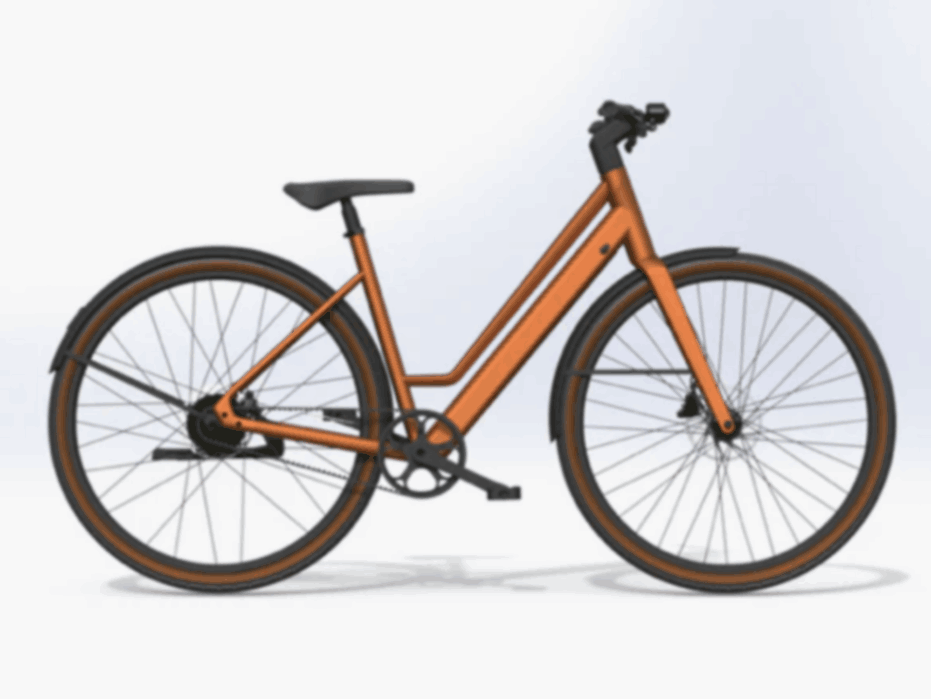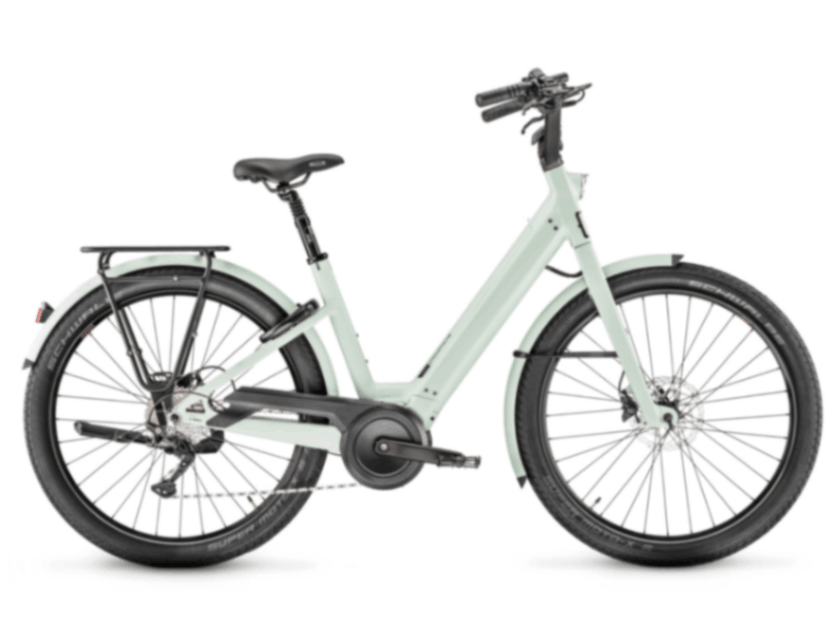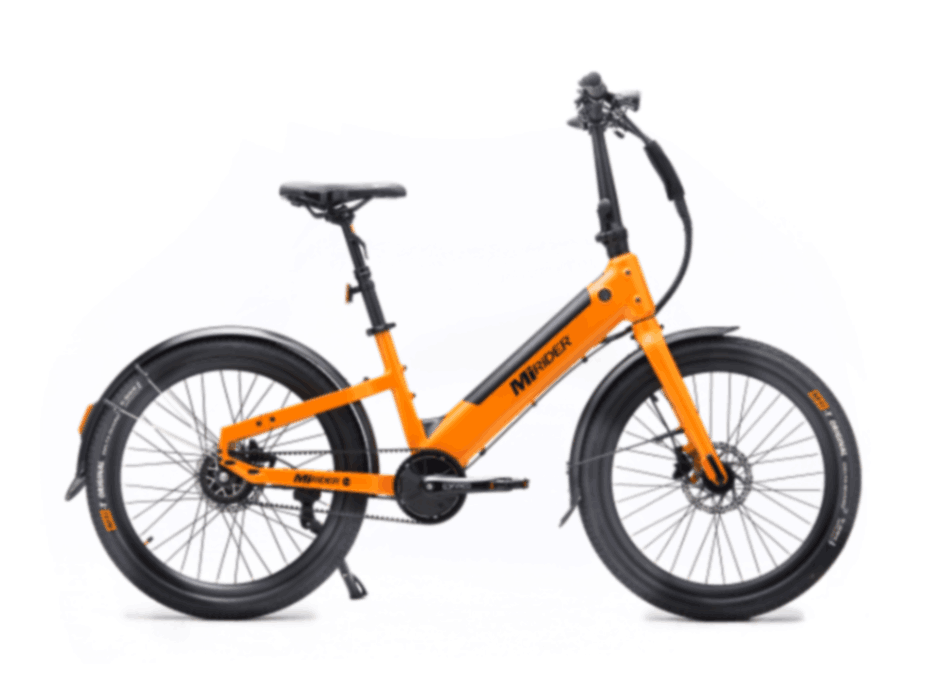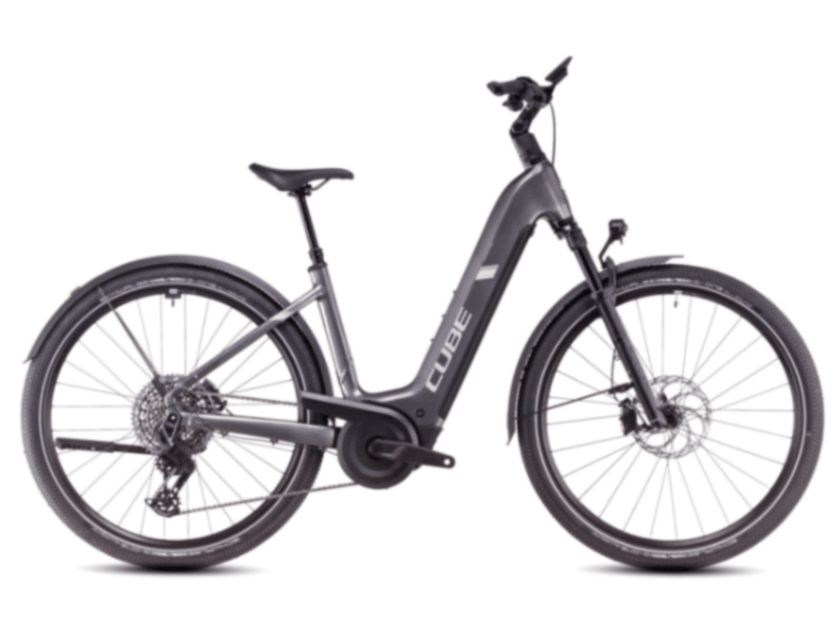Step through e-bikes: The definitive guide
Discover how step-through e-bikes combine convenience, style, and performance. Our in-depth guide helps you choose the right model for commuting, leisure, and adventure.
Key takeaways
-
Step-thru / step through e-bikes are easy to mount and dismount, making them very accessible.
-
The open frame design also lends itself to wearing whatever you like to ride, which can be useful for commuting or for anyone who doesn't want to necessarily wear trousers or shorts.
-
There are some design and engineering compromises inherent in the design, but these shouldn't be a problem for most uses.
Table of contents
- Key takeaways
- What is a step-thru / step through e-bike?
- What to look for in a step-thru e-bike
- Who should buy a step-thru / step through e-bike?
- Advantages of step-thru / step through e-bikes
- Disadvantages of step-thru / step through e-bikes
- How to choose the right step-thru / step through e-bike
- Budget and price
- Frequently Asked Questions
- Summary
We're fiercely committed to editorial independence. To fuel us to craft expert content we use affiliate links (*) through which we may receive commission.
What is a step-thru / step through e-bike
The "traditional" bicycle frame design with which we're all familiar consists, very simply, of two triangles joined along one side. It has the advantage of being simultaneously light, stiff and strong. Its principle disadvantage, of course, is that it also requires some flexibility and dexterity to mount – its rider needs to literally throw a leg over both saddle and rear wheel.
A step-thru / step through design solves this issue by doing away with the top part of the frame's front triangle – the crossbar, as it's commonly called, or "top tube" to give it its proper name. With a step-thru design, usually a single tube joins the front of the bike to the tube supporting the saddle (the "seat tube"), which means the rider can literally step through the frame with one leg. Most bikes of this design are also set up with a natural-feeling upright ride position.
What to look for in a step-thru e-bike
Weight, there's (probably) more
Losing one side of the frame's front triangle is a win for rider convenience, but it also means that, in order to be stiff and strong enough, the replacement tube must be both large and, usually, of relatively thick wall construction. This can contribute significantly to the frame's weight.
In the context of the additional weight of an e-bike's motor and battery, it may not matter in terms of riding. However, some step-thru e-bikes with a full complement of accessories tip the scales to around 30kg. To put that into context, it's about half as heavy again as the upper weight limit for a hold baggage on a flight. In other words, it's hard to lift for most people.
This may be a consideration if, for example, you need to carry your bike up some stairs in order to store it.
Motor
Step-thru / step through e-bikes span the breadth of motor position, from front or rear hub to mid-mount. Mid-drive motors centre the weight in the middle of the bike and can be more powerful, but they're a trickier design conundrum and so tend to be confined to higher-priced models.
Hub motors are easier to accommodate from the manufacturer's perspective, so you'll often find them in lower-priced models. The advantage of a rear hub motor is that it puts the power where you need it – at the wheel that's also driven by your pedalling. Front hub motors tend to be lighter, but on steeper or looser surfaces, it's easy for the wheel to lose grip. In most cases around town, this shouldn't be a problem.
If you ride purely for leisure and don't tend to take on challenging routes, a front hub motor may be adequate. For commuting or if you anticipate riding with any kind of load – shopping, perhaps – you should opt for a rear hub or mid-mount motor.
Battery and range
There's pretty much only one place to put the battery on a step-thru / step through e-bike, and that's inside the large tube that connects the front of the bike to the seat tube – a so-called integrated battery. Since this tube is fairly chunky, it gives manufacturers some choice over battery size and, consequently, range. Expect 375-800Wh, with the larger capacity batteries adding both range and weight.
Take manufacturer's range estimates with a pinch of salt. Particularly if you're commuting, work on the basis that the lower end is more realistic – and real world use will obviously vary according to factors like how hilly your route is, and how much weight you're carrying.
Some better specced models may have a removable battery, hidden under a cover. This has two main advantages. First, removing the battery may make charging easier. And second, an e-bike's battery is a significant chunk of its weight – often around 2-4kg – and so removing it can make carrying the bike a little easier where that's necessary.
Suspension fork
An increasingly popular option, the appeal of a suspension fork is additional comfort on rough surfaces or potholed roads. However, it's worth bearing in mind that a suspension fork is always a heavier option than a rigid one. Additionally, the upright ride position of most bikes of this type mean that there's relatively little opportunity for the suspension to do very much. It can be nice to have, but we wouldn't class it as essential.
Accessories
Most step-thru / step through bikes are designed to be a utilitarian means of transport, so they often come fully equipped with a range of accessories. It's also an opportunity for manufacturers, particularly of the higher-end models, to get cunning with some semi-integration for a neater appearance and better function.
- Mudguards and chain guards
These do exactly what you'd expect them to do, helping to protect both you and your clothing from dirt and splashes. The perfect mudguard hasn't been designed yet, though, so don't expect miracles.
- Lights
Lights can be neatly integrated into the bike's existing electrics, and some manufacturers go further by, for example, building rear lights into mudguards. With modern LED bulbs and a huge battery capacity, this removes any worries about whether or not your lights work. Be aware, though, that front lights are usually of the "be seen" variety and won't have enough oomph to illuminate the way ahead on an unlit road.
- Luggage racks
Racks extend the versatility of any bike to make it a potential shopper, commuter or tourer. Don't underestimate the need for rigidity – a rack that's going to be used regularly needs to be made of stern stuff. Semi-integrated designs, usually found on higher-priced models, can really help with this.
- Kickstand
A kickstand can be nice to have, but do check that it's sturdy enough for the weight of your e-bike (and, potentially, some luggage if you're carrying any).
- Locks
Built-in locks are increasingly popular, but are no substitute for a really good additional lock to secure the bike to a fixed, immovable object. Don't rely on them.
Who should buy a step-thru / step through e-bike?
If you can ride a bike and are able to lift one foot 30cm or so off the ground, you can probably ride a step-thru / step through e-bike. In many ways, it's that simple – and the design is a great leveller in terms of opening up e-bike use to people who may lack the flexibility and athleticism demanded by a traditional frame design.
The other advantage, of course, is that the lack of a crossbar opens up clothing choices. Whether you're riding for leisure or commuting to work, that might also be a consideration – because most people don't change clothes in order to ride their bike.
What step-thru / step through e-bikes aren't very good at, is being sporty or high performance. Even with the large diameter connecting tube, it's tricky to make them as stiff as traditional frame designs – and the extra weight can count against them, too. If your intended riding is in any way challenging, you may want to look elsewhere.
Advantages of step-thru / step through e-bikes
Arguably one of the most people-focussed of bike designs, step-thru e-bikes open up the freedom of two wheels to more people than ever.
- Easy mounting and dismounting
The lack of a crossbar / top tube means you can literally "step through" the frame.
- Comfort
The sit-up-and-look-at-the-view ride position of most step-thru e-bikes is one that many people find comfortable.
- Freedom to wear what you want
For people who don't regard themselves as cyclists, being able to wear whatever you like to ride is a bonus.
- Adaptability
Many step-thru e-bikes are equipped with accessories to make carrying shopping or commuting to work straightforward.
Disadvantages of step-thru / step through e-bikes
Nothing is perfect in this world, and that's as true of step-thru e-bikes as it is of anything else.
- Weight
Making a step-thru frame that's stiff and strong enough adds additional weight, which could be an issue if you ever need to carry your bike.
- Stiffness
Although unlikely to be an issue in everyday riding, it's worth knowing that most step-thru designs are a little compromised in stiffness.
- Ride position
Whilst the upright ride position of many step-thru e-bikes is comfortable for short rides, it's not so good for longer periods in the saddle.
How to choose the right step-thru / step through e-bike
The greater your budget, the more choices you have. However, it's worth starting with your intended use to get some idea of what might suit you best.
For gentle leisure riding with perhaps the occasional shopping trip or commute – and particularly if you're on a limited budget – a step-thru / step through e-bike with a front hub motor will be fine.
However, if you have the budget – and particularly if your ambitions extend to more frequent or slightly more demanding use – we'd recommend going with a rear hub motor or, if possible, a mid-mount hub motor. These have the advantage of putting the drive where it's needed, rather than to the wheel that's also doing the steering.
If you want to carry a load, whether that's shopping or work-related stuff, pay particular attention to the sturdiness of any luggage carrier, as well as the battery capacity (because of range considerations).
Don't get too hung up on whether or not your intended bike has a suspension fork – they generally don't make as much difference to ride comfort with this type of bike as tyre and saddle choice, or tyre pressure, all of which are easy to change according to preference.
Keep an eye on weight. Step-thru / step through e-bikes can vary from as little as 17kg to as much as 30kg, although most are 25-30kg. That's a fairly significant weight that you won't feel whilst riding, but can be a consideration if there are ever any circumstances where you need to lift your bike – for example, to store it at work or at home. A removable battery can help here, because the battery alone is likely to weigh 2-4kg.
Budget and price
Under £1,500
What to expect
Lower prices are generally dominated by hub motors and non-removable batteries, but that shouldn't necessarily put you off – and it's still possible to find standout bikes with mid-drive motors and/or removable batteries, which are normally the preserve of higher priced models.
Ado Air 28
With a clean look that deliberately echoes traditional Dutch bikes and a clean, quiet carbon belt in place of a chain, the Ado Air 28 immediately stands out. Unusually, the 345Wh battery lives in the seatpost, under the saddle. The rear hub motor delivers up to 42Nm of assistance, but it's worth noting that there are no gears – this isn't a bike that's likely to be at home on hilly routes, although it does weigh a respectable 22kg including all accessories.
Ebco Urban 3L
This is a bike that's an exception to the rule, offering a Bafang mid-drive motor with up to 65Nm of torque – more assistance than most hub motors provide – and a 417Wh battery that's also removable. With hydraulic disc brakes and a full set of accessories including mudguards, chain guard, kickstand, lights and luggage carrier, it weighs a very reasonable claimed 22kg.
£1,500 - £2,,500
What to expect
As your budget increases, you can expect to see a move towards premium brand mid-drive motors and removable batteries. Accessory kits are likely to be generous, although make sure what's included meets your needs.
Estarli E28.X
Taking an unconventional approach, the Estarli eschews throwing the accessory kitchen sink at their stripped-back E28.X in favour of adding just mudguards and integrated lights, and letting you select anything else as optional extras. With a removable 360Wh battery and belt-driven rear hub drive with automatic two-speed shifting, it weighs as little as 19kg.
Moustache Lundi 27.1
Featuring a Bosch mid-mount motor with up to 50Nm of assistance and a matching Bosch 400Wh battery, there's also a reliable Shimano Deore 10-speed gear system and Shimano hydraulic disc brakes. The swept-back handlebar gives a ride position that most people will find comfortable, the accessory package is comprehensive and the claimed weight is just over 25kg.
£2,500 and above
What to expect
If your budget will stretch north of £2500 you'll be able to enjoy premium components, and you should also expect considerable thought to have gone into the design. It's worth paying particular attention to your intended use, because manufacturers will have gone to a fair bit of trouble to tailor accessory packages.
Mirider 24 GB3
With a notably compact design, 24 inch wheels and folding handlebar and pedals, this is a bike that offers a clever compromise between a folding bike and a full size one. Its unique MiDrive hub motor is driven by a Gates carbon belt and offers up to 45Nm of assistance, plus 3 gears selected by a twist grip. The removable battery has a capacity of 378Wh, and the all-up weight is 21kg.
Cube Nuride Hybrid SLT 800 Allroad
Offering a halfway house between a mountain bike and a tourer, CUBE's Bosch-powered step-thru e-bike serves up 85Nm of torque and a removable 800Wh battery, plus GPS connectivity. Premium components include electronic 12 speed gears, a Fox suspension fork and Magura hydraulic disc brakes. At 27kg it's not light, but it has the best possible power and range.
Frequently Asked Questions
How much should I expect to spend on a step-thru / step through e-bike?
You can find step-thru e-bikes from around £500, but you should expect some significant compromises in design and component quality at this price. We'd recommend budgeting at least £1000, although it's well worth keeping an eye out for price reductions and offers on end-of-line models.
How heavy is a step-thru / step through e-bike?
Weights vary enormously and depend on frame design, battery capacity, motor type and what kind of accessory package is fitted. The lightest models can weigh as little as 17kg with the battery removed, but weights above 20kg are more the norm and up to 30kg is possible.
Why aren't all e-bikes made with a step-thru / step through design?
Although it's great for accessibility, in engineering terms the step-thru design is a compromise. The traditional frame design with two triangles joined on one side is, all else equal, lighter, stiffer and stronger.
Summary
Step-thru / step through e-bikes do what they say on the tin, providing a comfortable and accessible way for more people to enjoy cycling. By combining the ease of use of an e-bike with a frame that makes it simple to mount and dismount, limited flexibility is no longer a barrier to enjoying life on two wheels.
Manufacturers have taken this opportunity to heart, designing a wide range of bikes – many with comprehensive accessory packages – that should appeal to all ages. Whether you want a bike to explore at the weekends, pop to the shops, commute to work or ride further afield, there should be a step-thru e-bike to suit you.

